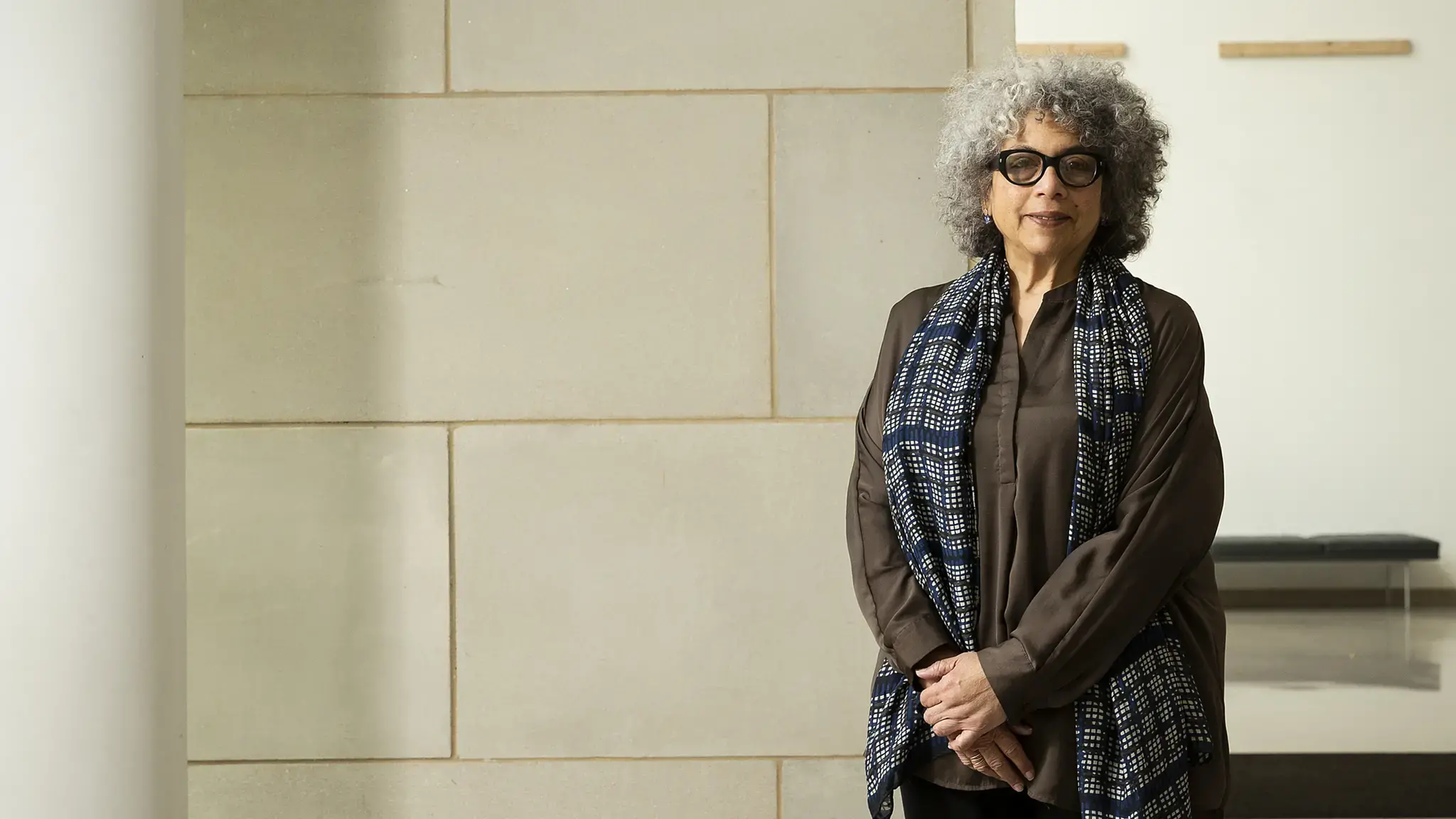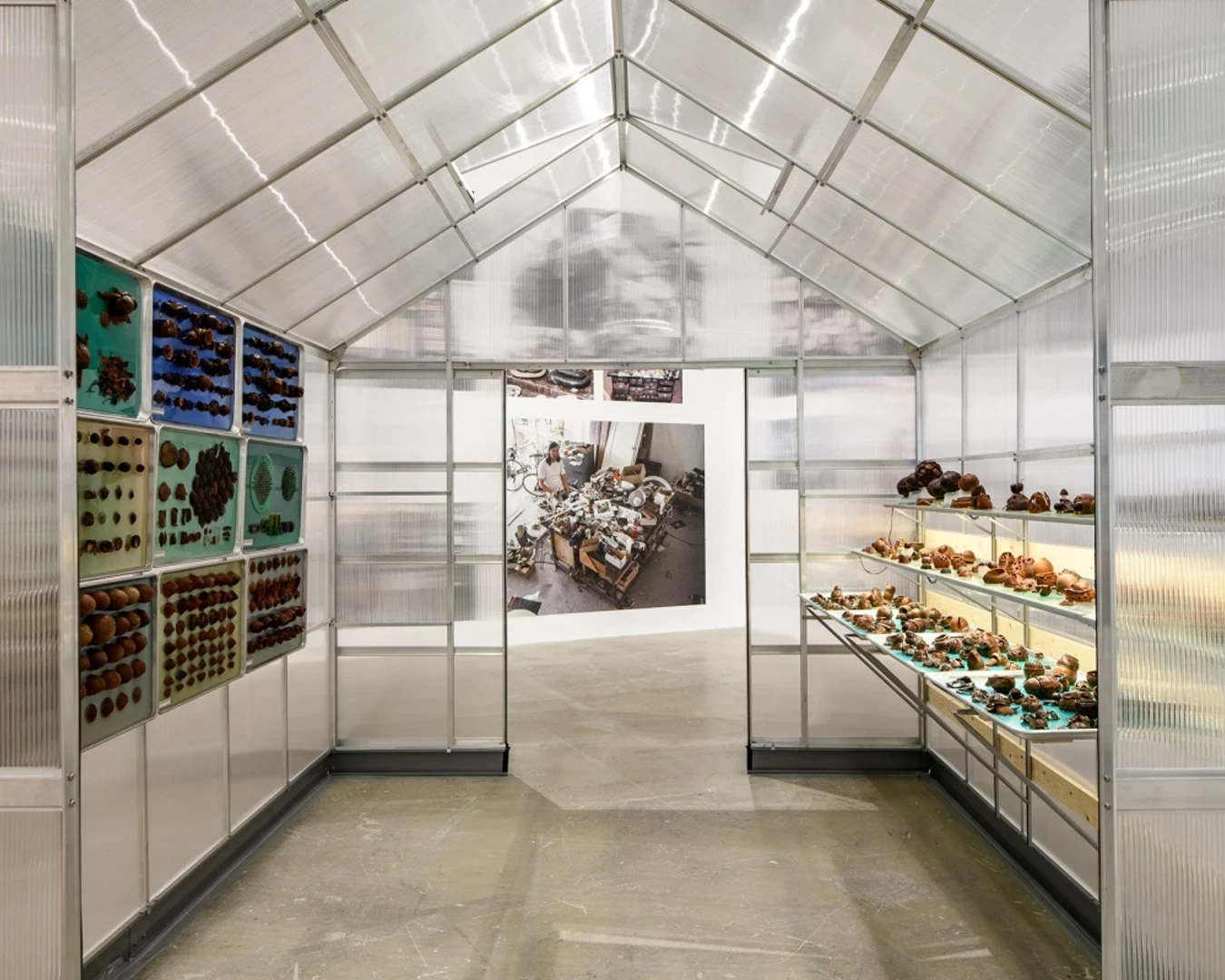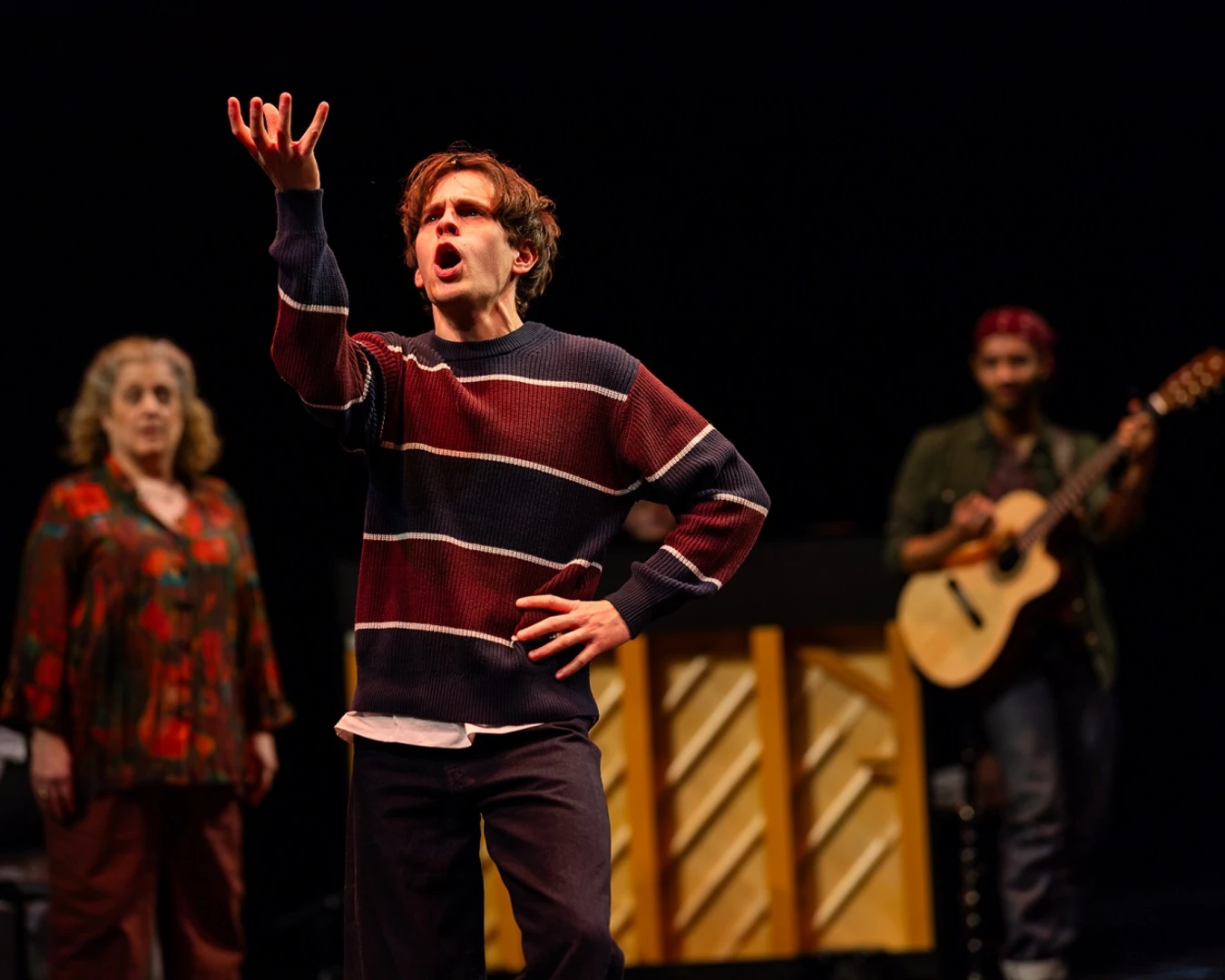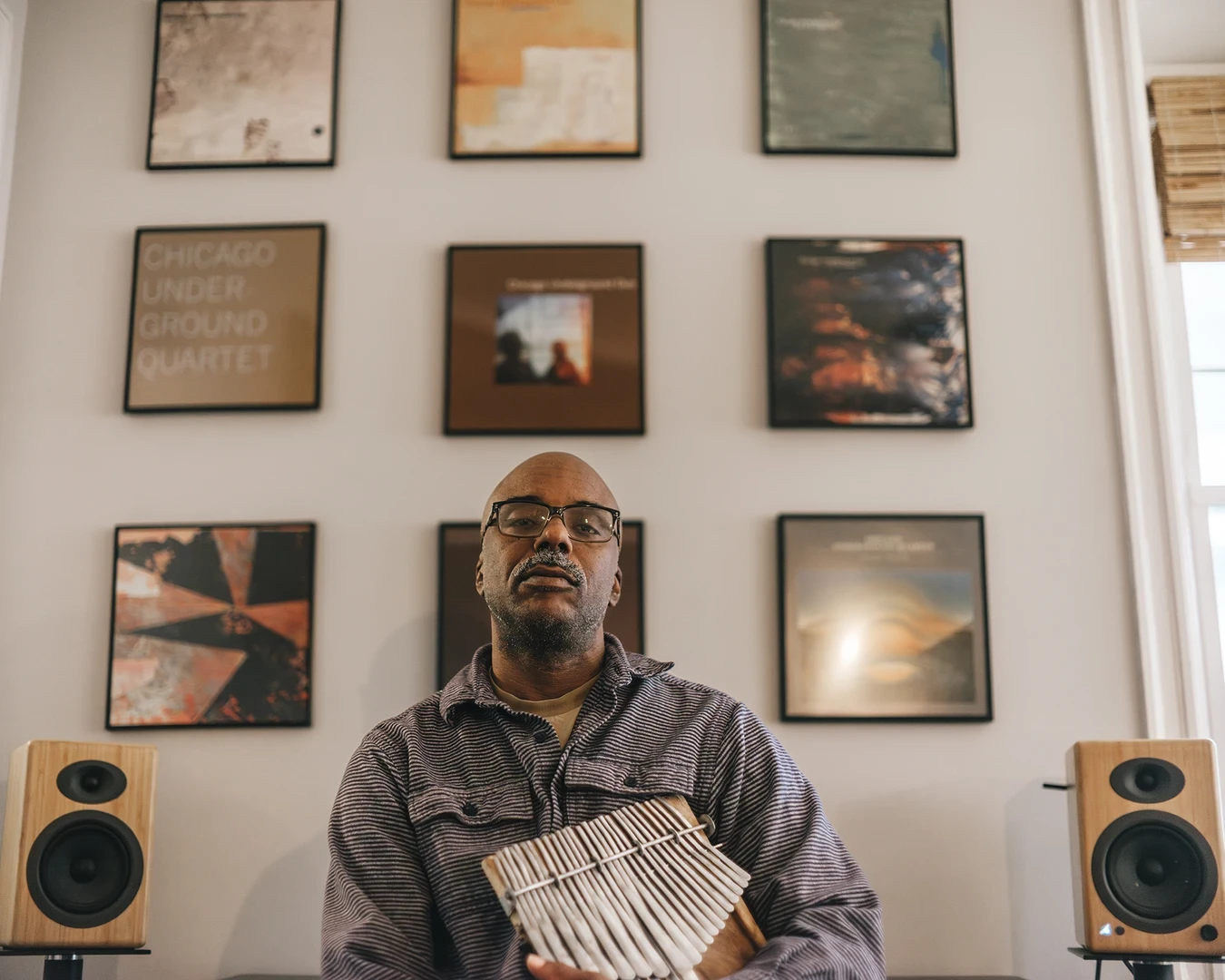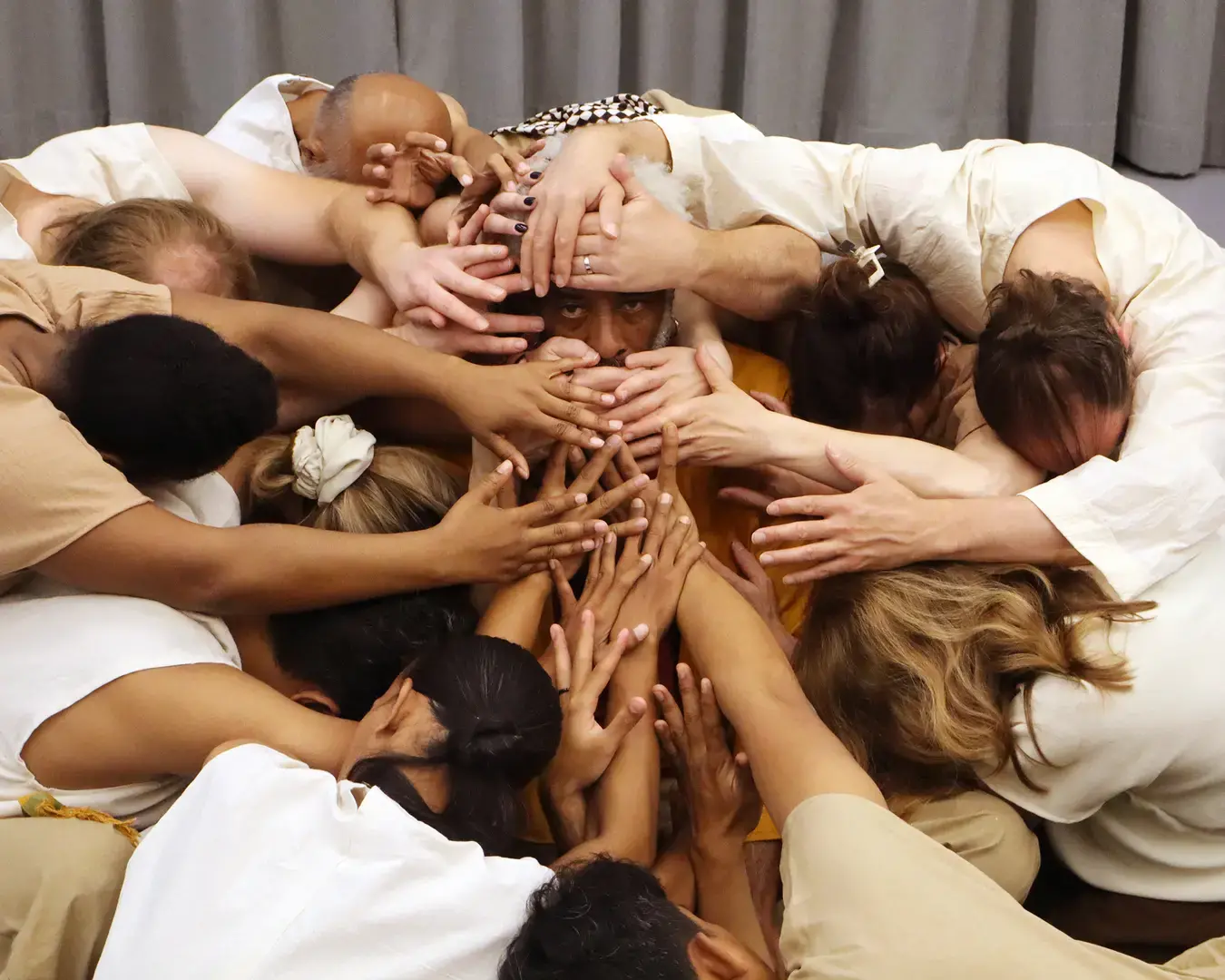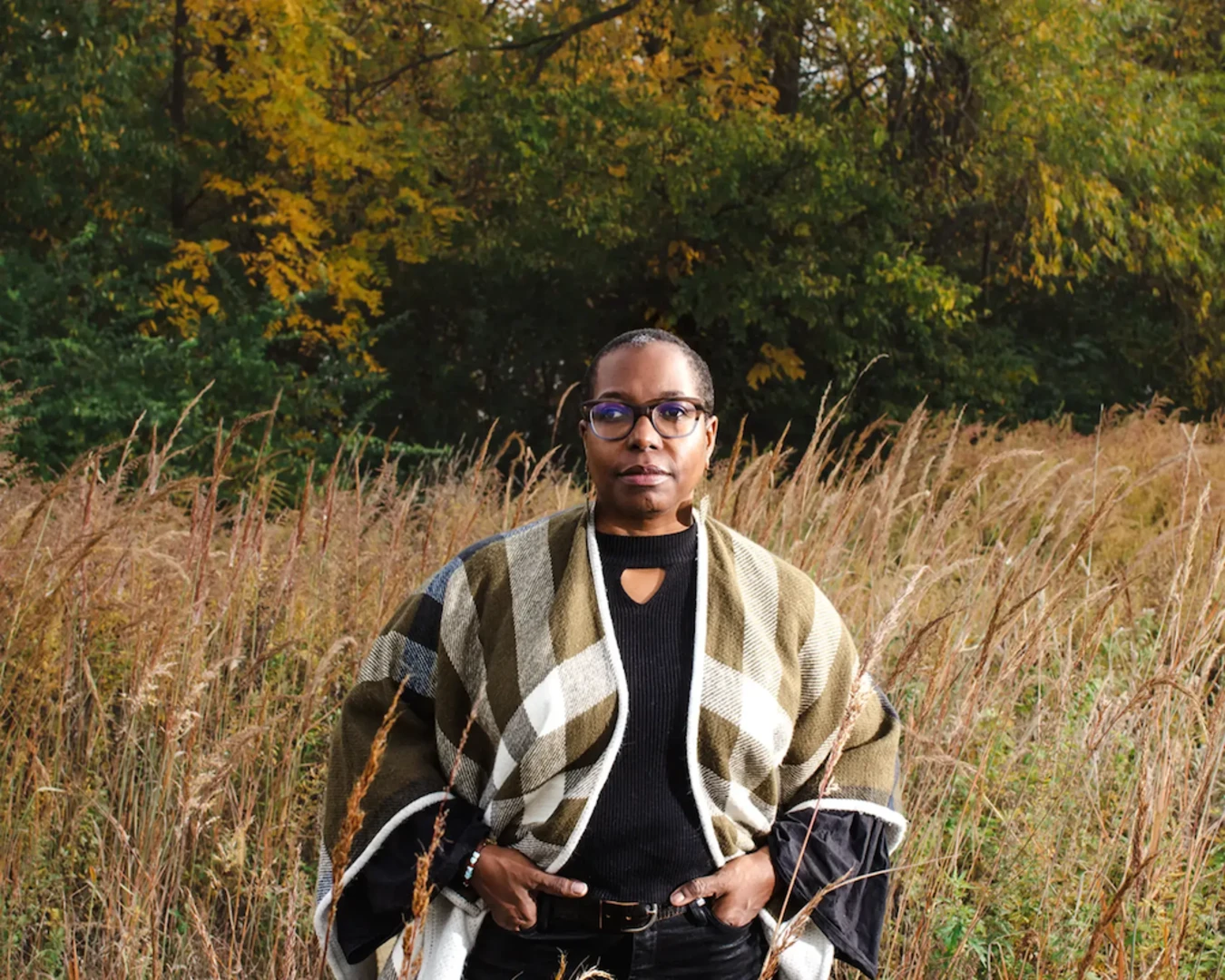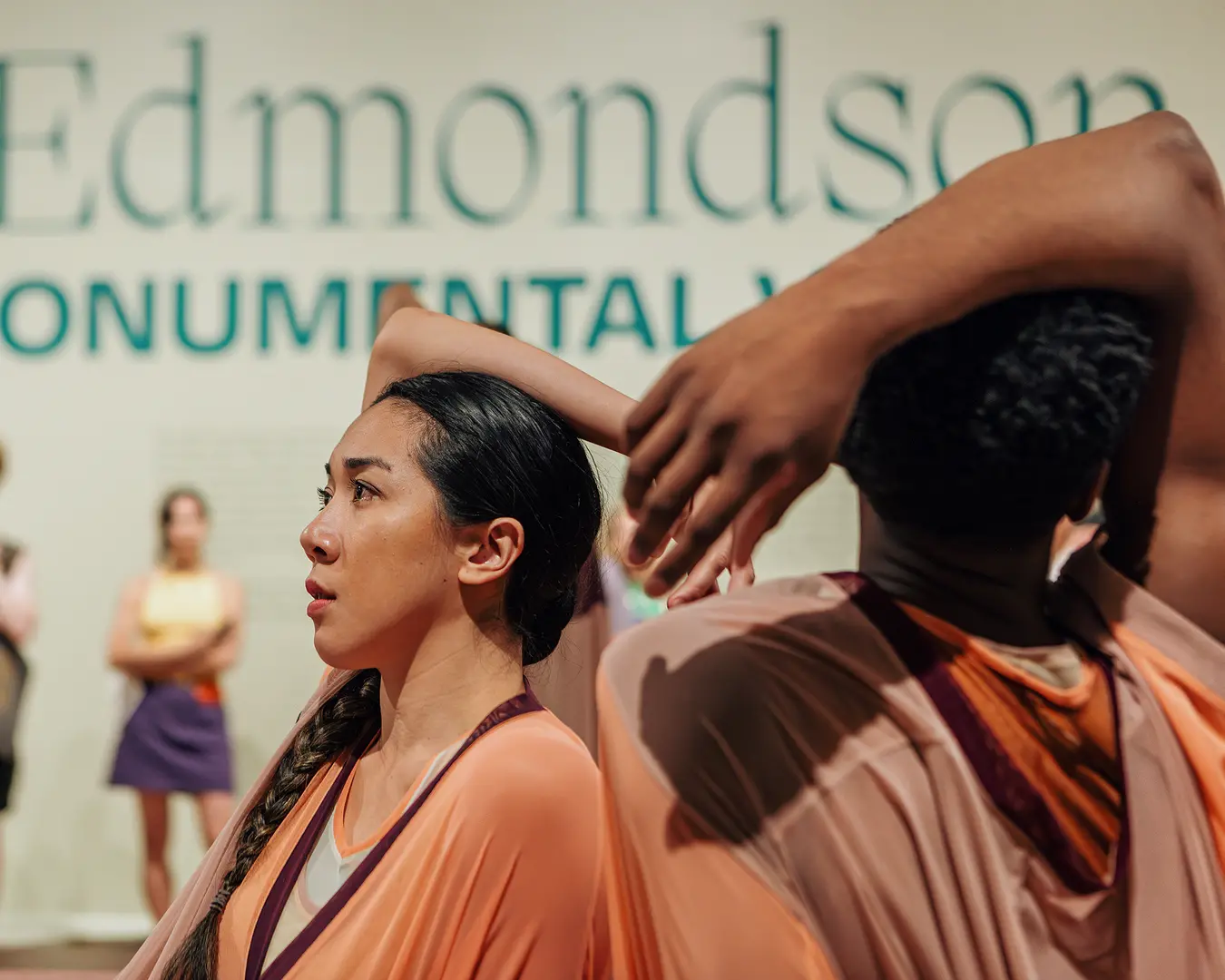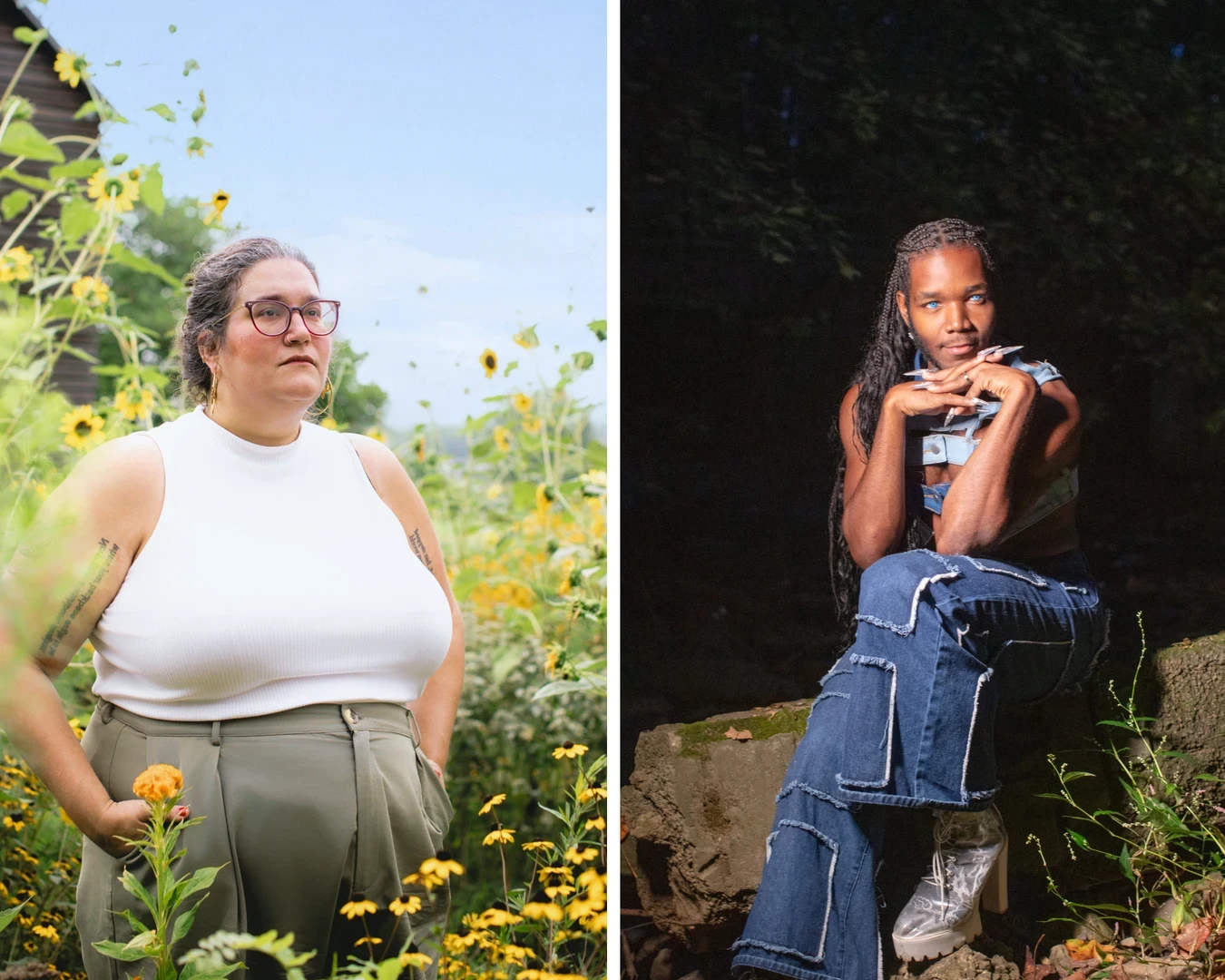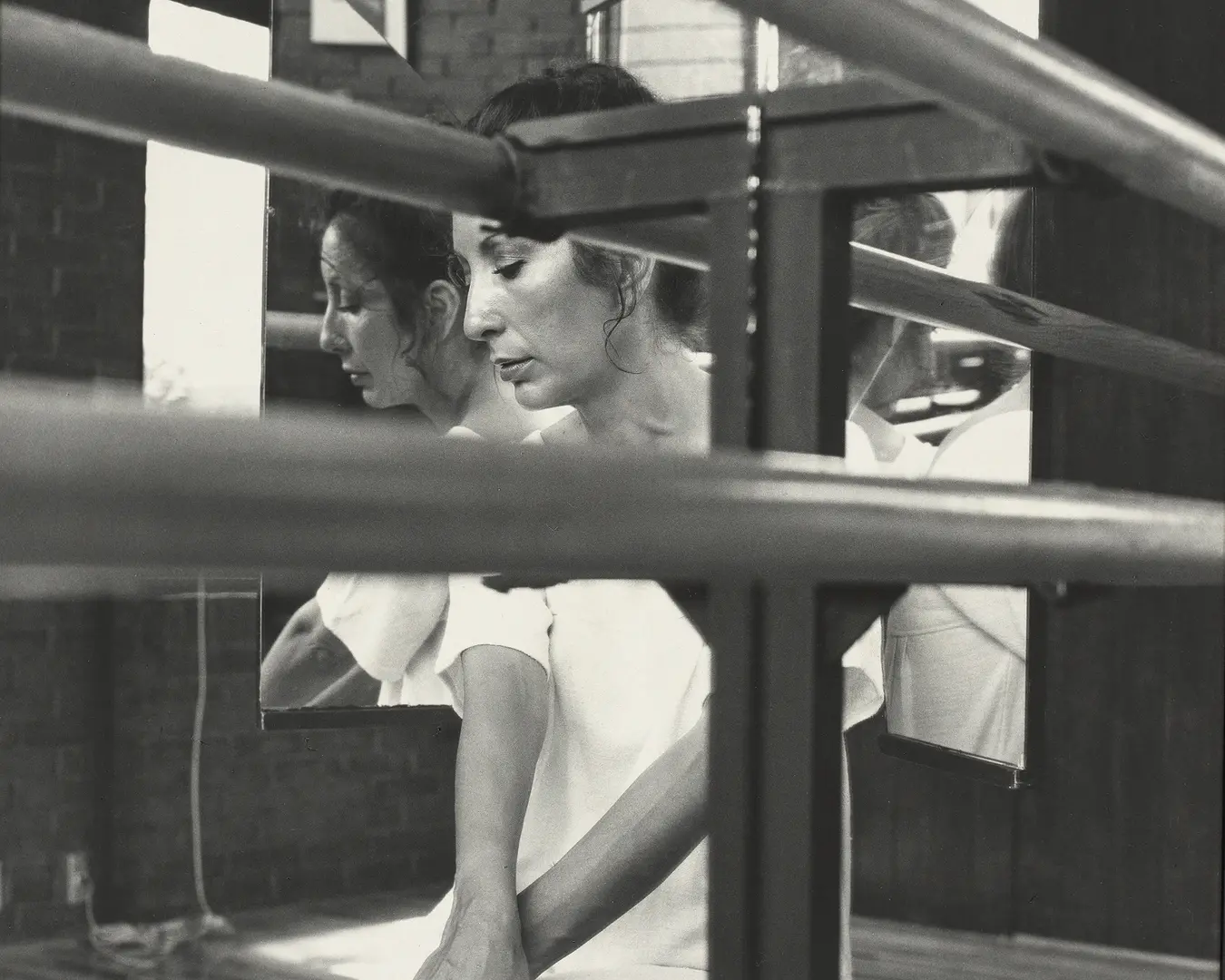The Center invited nationally recognized educator, administrator, funder, and curator Linda Earle to act as the Center’s 2021 Visiting Scholar, exploring how Black archives can serve as a framework for a multivalent exploration of Black cultural production. In this essay, Earle considers her time in this role.
“Until we meet again…the diasporic is an act of will and memory.”
—bell hooks, Art on My Mind: Visual Politics
The epigraph prefacing bell hooks’ book of essays has lived on a Post-it above my desk during my work on this project. I’d been rereading the book for pleasure and copied it out—as I sometimes do when with poetry—when the language is arresting and opens subliminal pathways to recognition, emotion, or memory, without losing its mystery or mischief.
The Pew Center for Arts & Heritage’s invitation to be a Visiting Scholar has been an extraordinary opportunity for someone of my experience: My research is central to what I do, but I don’t see myself as a scholar. I teach, but explicitly as a Professor of Practice. I write about art, but I’m not a critic. I felt myself to be in some ways an unlikely candidate to explore the vast complex territory of Black cultural production. It was my experience, however, that led to my pursuing archives as a way into the broader topic.
Archives and libraries have had an emotional as well as intellectual impact on me. Perhaps this is because there is something inherently urgent and restless in the act of searching, or because of the sometimes-unacknowledged recognition of how the dynamics of archival systems can mirror historical trauma. It had been years since my last direct engagement with archives, and I started with questions about the functional protocols and how they inflect access. I was thinking, too, of how the systemic mediation, through these tools, toward certain narratives is sometimes made illegible by association with the aura of “authority” attached to institutions in this society. Archives are often approached as if they are an inherently neutral domain of knowledge. This notion formed a juncture with my teaching. For the last few years, I’ve been primarily engaged with building arts management curriculum specifically within an art history department at an art school. That has meant not only teaching institutional practices, but helping students establish critical frameworks for studying them. This work has several pedagogical purposes: to understand those practices functionally, to decode the underlying historic and cultural assumptions, and to challenge those assumptions that support asymmetries in access and participation and pose obstacles to cultural justice. Whether the class is on cultural policy, philanthropy, or basic arts management, the goal is for students to learn not only to practice critique but also to go on to create platforms for research or action that acknowledge previously suppressed or marginalized bodies of knowledge and histories (and are enriched and complicated by their presence). These teaching objectives became my approach to learning about more about Black archives.
The result was the four public conversations with Black practitioners that comprise the Archiving Black Culture webinar series:
- “Recovering Marginalized Histories” with Rayna Andrews (Archives of American Art) and Simone Fujita (Getty Research Institute)
- “Digital Protocol and Possibilities” with Synatra Smith (Fellow Digital Curation, PMA), Faithe Day (Independent Scholar), and Portia Hopkins (Rice University)
- “Curating from the Archive” with Rujeko Hockley
- “Artists, Community and Alternative Archive Practices” with Steven Fullwood and Miranda Mims
The work of these young Black cultural practitioners is transforming knowledge and access on a tectonic level that influences public-facing programming, writing, participation, and creation.
My final conversation for the project was an interview with an old friend, the artist and filmmaker Cauleen Smith, which will be published on the Center’s website in the coming weeks. The conversation covered mutual interests radiating from questions around the particular role of film as art and an archival medium.
I end this project and my curiosity persists, but it is more informed. I look at the bell hooks welcome to readers on that Post-it and think of the interplay of its legibility and enigma—particularly of how the ellipsis signals things unsaid but somehow present. This reflects the architecture of memory and, I think, the institutionalization of memory. In the context of an archive as a body, a system that has metabolized our long history of racism may mean that there will always be the messy, contradictory, and illegible regions. They may never become transparent and resolved, but they are nevertheless meaningful. As Cauleen Smith says in our conversation, “The murkiness is part of an African American identity…Blackness isn’t even a skin color. It’s a cultural practice. It’s a mystery. It’s a legacy.”
Project Acknowledgements
This project happened to traverse a most challenging year. I first want to thank Paula Marincola and the entire staff of the Center for their response and the financial and moral support of the arts community they continue to provide.
On a personal level, I am deeply grateful for the encouragement, expertise, and collegiality of Paula, Melissa Franklin, and Kelly Shindler, throughout the course of this project. In addition to the wonderful participants in the public panels and interviews, I want to acknowledge Thomas Lax for thought partnership and reading recommendations and Leslie Willis-Lowry, archivist at the Charles Blockson Afro-American Collection at Temple University, for her inspirational introduction to this essential resource.
Partial Bibliography
These are some of the books, articles, essays, and poems that led me through the project. I’ve chosen here the ones that were technical “primers,” as well as those that also opened up portals to streams of materials about the political, historic, philosophical, and creative dimensions of Black archives I hope to pursue down the road.
- Antracoli, Alexis, Annalise Berdini, Faith Charlton, Amanda Ferrara, Valencia Johnson, and Katy Rawdon. “Archive for Black Lives in Philadelphia Anti-Racist Description Resources.” Creative Commons Attribution 4.0 International License, 2020 2019.
- Bell, Bernard W. “Passing on the Radical Legacy of Black Studies at the University of Massachusetts: The W.E.B. Du Bois Department of Afro-American Studies, 1968-1971.” Journal of African American Studies 16, no. 1 (2012): 89–110. http://www.jstor.org/stable/43525476.
- Brooks, John. “The Heretical History of Robin Coste Lewis’s The Voyage of the Sable Venus.” African American Review 52, no. 3 (2019): 239–53. http://dx.doi.org.libproxy.temple.edu/10.1353/afa.2019.0035.
- Archives For Black Lives. “Community Archives,” February 9, 2019. https://archivesforblacklives.wordpress.com/community-archives/.
- Day, Faithe. “Black Living Data Booklet,” January 1, 2020. https://www.academia.edu/44645713/Black_Living_Data_Booklet.
- Drake, Jarrett. “Blood at the Root.” Journal of Contemporary Archival Studies 8, no. 1 (April 16, 2021). https://elischolar.library.yale.edu/jcas/vol8/iss1/6.
- Jimerson, Randall. “Archives for All: Professional Responsibility and Social Justice.” The American Archivist 70, no. 2 (September 2007): 252–81. https://doi.org/10.17723/aarc.70.2.5n20760751v643m7.
- Kabir, Ananya Jahanara, and Francesca Negro. “Solano Trindade’s Gift to Alvin Ailey: New Evidence from the Black Archives of Mid-America.” The Black Scholar 49, no. 3 (July 3, 2019): 6–20. https://doi.org/10.1080/00064246.2019.1619118.
- Lorde, Audre. A Burst of Light: And Other Essays. Ixia Press edition. Mineola, New York: Ixia Press, 2017.
- Lewis, Robin Coste. Voyage of the Sable Venus and Other Poems. First edition. New York: Alfred A. Knopf, 2015.
- McKittrick, Katherine. “Dear Science and Other Stories,” January 8, 2021. https://doi.org/10.1215/9781478012573.
- Morris, Catherine, Rujeko Hockley, Connie H. Choi, Carmen Hermo, Stephanie Weissberg, and Brooklyn Museum, eds. We Wanted a Revolution: Black Radical Women, 1965-85: A Sourcebook. Brooklyn, NY: Brooklyn Museum, 2017.
- Onli, Meg, Amber Rose Johnson, University of Pennsylvania, and Institute of Contemporary Art. Colored People Time, 2020.
- Scott, David. “Introduction: On the Archaeologies of Black Memory.” Small Axe: A Caribbean Journal of Criticism 12, no. 2 (June 1, 2008): v–xvi. https://doi.org/10.1215/-12-2-v.
- ———. “On the Archaiologies of Black Memory.” Small Axe: A Carribean Journal of Criticsm, no. Number 6 (2008): vi–xvi.
- Smith, Cauleen. Human 3.0 Reading List 2015-2016. Chicago, IL: Corbett vs. Dempsey, 2016.
- Soc. of American Archivists. “Society of American Archivists: ‘The Archivists Task Force on Racism,’” September 2020. https://www.archives.gov/about/speeches/2020/archivist-task-force-racism.
- Wolf, Matt. Recorder: The Marion Stokes Project. Streaming, Documentary. Zeitgeist Films, 2019.
